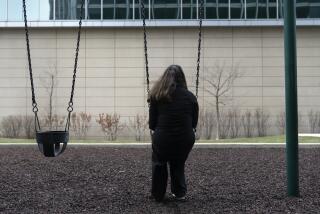Studies Say Mental Illness Too Often Goes Untreated
- Share via
CHICAGO — Mental disorders afflicting millions of Americans often make their first appearance in adolescence but usually go untreated for decades, researchers said Monday.
“[Mental illness] is the most prevalent chronic condition in youth,” said Ronald C. Kessler, author of two Harvard Medical School studies examining the prevalence of mental problems.
“Fewer than one in three people get adequate treatment. We have to do a better job of getting people into treatment,” he said.
Many wait years, even decades, to seek treatment for their depression, anxiety or bipolar disorder, symptoms of which may have emerged as early as age 11, the study said.
A number of factors may be at play, Kessler and other experts said, including a lack of early screening and social or cultural pressures.
His studies were published in the Archives of General Psychiatry, along with others based on data from more than 9,000 adults collected in 2001 by University of Michigan researchers.
A report from Harvard researcher Philip Wang found that two out of five people whose illness qualifies as a mental disorder got help within the previous 12 months.
“Unmet need for treatment is greatest in traditionally underserved groups, including elderly persons, racial-ethnic minorities, those with low incomes, those without insurance, and residents of rural areas,” Kessler said.
Lack of early treatment for children and teenagers can lead to debilitating problems such as drug abuse and obsessive compulsive disorder, Kessler said.
Overall, about half of all Americans report at least one symptom of mental disorder at some point in their lifetimes, one of his studies concluded.
Last year a commission appointed by President Bush recommended screening for students at public schools.
“It is difficult for us to predict who is going to go on and develop severe mental problems and who is not,” said Thomas Insel, a commission member.
Thousands of schools are already working on early detection methods to fight teen suicide.






